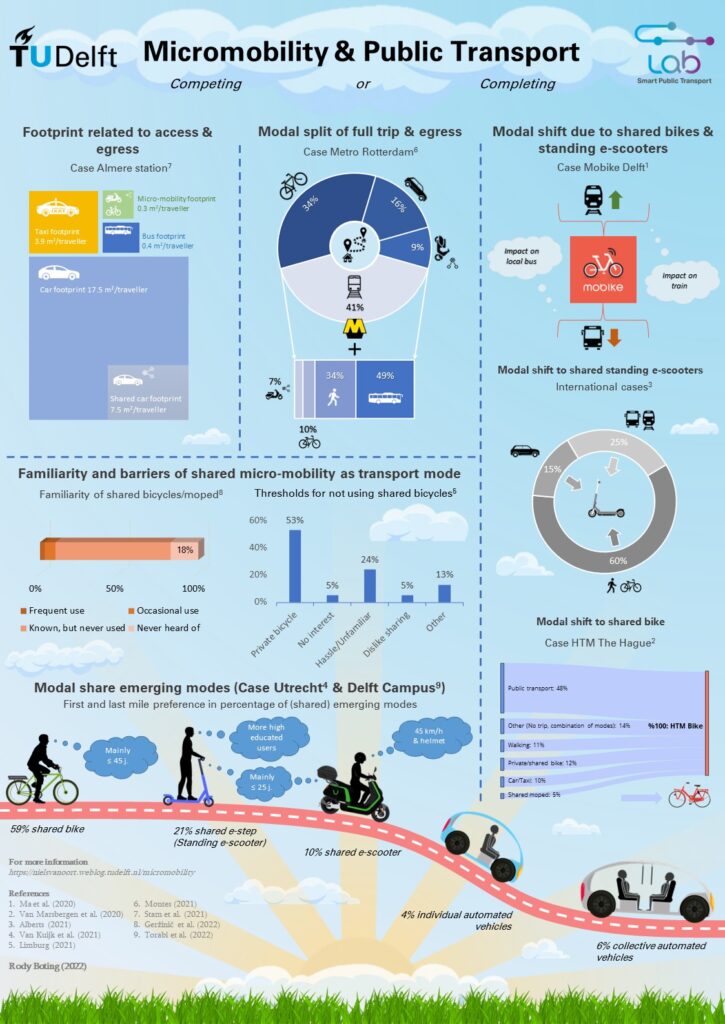Micromobility and public transport
Following technological and societal developments, new modes and services arrive in our cities. Micromobility solutions, such as shared (e-)bikes and –scooters, are adding new opportunities for individuals, but what their (potential) contribution is to societal objectives such as sustainability, land use and inclusiveness, is not yet known. In order to gain this knowledge and optimize the mobility mix, the Smart Public Transport Lab investigates the demand and supply impacts and interaction of micromobility, including the interaction with public transport. In this infographic the main, recent results of the ongoing research are summarized.

Find more results and details in the related papers and theses:
1. Ma et al. (2020): Bike-sharing systems’ impact on modal shift: A case study in Delft, the Netherlands
2. Van Marsbergen et al. (2022): Exploring the role of bicycle sharing programs in relation to urban transit
3. Alberts (2021): Standing e-scooters, what to expect: micro-mobility with micro effects?
4. Van Kuijk et al. (2022): Preferences for shared modes of local public transport users in the last mile
5. Limburg (2021): Potential for sustainable mode usage amongst car users in mid-sized cities
6. Montes et al. (2023): Studying mode choice in multimodal networks including shared modes
7. Stam et al. (2021): Travellers’ preferences towards existing and emerging means of first/last mile transport: a case study for the Almere centrum railway station in the Netherlands
8. Geržinič et al. (2022): Potential of on-demand services for urban travel
9. Torabi et al. (2022): Passengers preferences for using emerging modes as first/last mile transport to and from a multimodal hub case study Delft Campus railway station





2 comments